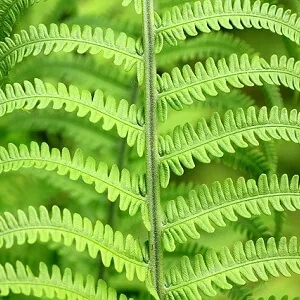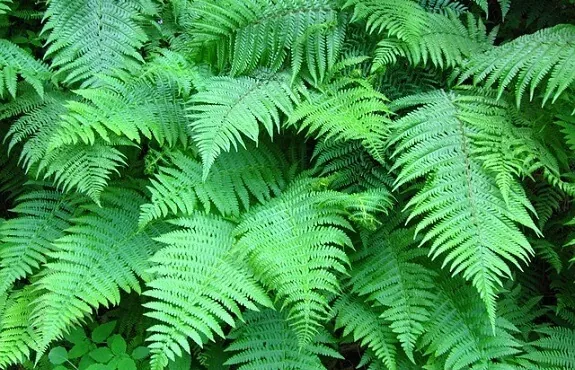 Ferns are versatile and attractive plants that can thrive in containers, making them an excellent choice for both indoor and outdoor planter boxes in Australia. With millions of years of history, ferns typically grow in forests, on rocky hills, and in sandy areas. Their lush foliage and diverse textures can add a touch of elegance and natural beauty to any environment. This guide will provide you with essential information on successfully growing ferns in pots, tailored to Australian conditions.
Ferns are versatile and attractive plants that can thrive in containers, making them an excellent choice for both indoor and outdoor planter boxes in Australia. With millions of years of history, ferns typically grow in forests, on rocky hills, and in sandy areas. Their lush foliage and diverse textures can add a touch of elegance and natural beauty to any environment. This guide will provide you with essential information on successfully growing ferns in pots, tailored to Australian conditions.
Selecting the Right Fern
When choosing ferns for growing in planters, consider the following factors:
- Light requirements: Most ferns prefer bright, indirect light or dappled shade.
- Size at maturity: Ensure the chosen fern will fit comfortably in your selected container.
- Climate adaptability: Select ferns that can withstand your local climate conditions.
Some popular fern varieties suitable for container growing in Australia include:
- Rough or scaly tree ferns (Cyathea australis)
- Soft tree ferns (Dicksonia antarctica)
- Bird’s nest ferns (Asplenium australasicum)
- Maidenhair ferns (Adiantum spp.)
- Elkhorn and staghorn ferns (Platycerium spp.)
Choosing the Right Container
Selecting an appropriate container is crucial for the health of your fern:
- Size: Choose a pot that is at least 40 cm deep and allows 2-5 cm of space around the plant’s root ball.
- Material: Plastic or resin containers are preferable as they retain moisture better than clay pots.
- Drainage: Ensure the pot has adequate drainage holes to prevent waterlogging.
For hanging baskets, follow the same size requirements and ensure good drainage.
Soil and Planting
Ferns thrive in well-draining, organic-rich soil that mimics their natural woodland habitat:
- Use a potting mix specifically designed for ferns or create your own by combining:
- Three parts peat-free multipurpose compost
- One part coarse sand or perlite
- One part horticultural grit
- When planting, ensure the crown of the fern (where the fronds emerge) is level with or slightly above the soil surface to prevent rot.
Watering and Humidity
Proper watering is crucial for fern health in Australia’s often dry climate:
- Keep the soil consistently moist but not waterlogged.
- Water at the soil level to avoid wetting the fronds.
- Allow the soil to dry slightly between waterings, but never let it dry out completely.
Ferns thrive in humid environments. To increase humidity in Australia’s dry conditions:
- Mist the fronds regularly, especially during hot, dry periods.
- Place the pot on a tray filled with pebbles and water, ensuring the pot’s base doesn’t touch the water.
- Use a humidifier near your plants, especially if growing indoors.
Fertilising
Ferns have relatively low nutrient requirements, but regular feeding can promote healthy growth:
- During the growing season (spring and summer), fertilise monthly with a balanced, water-soluble fertiliser (e.g., Seasol Power Feed).
- In winter, reduce fertilisation to once every 2-3 months.
- Always dilute fertilisers to half the recommended strength to avoid burning the delicate roots.
Light and Temperature
Most ferns prefer bright, indirect light:
- Indoors, place ferns near a north or east-facing window.
- Outdoors, choose a spot with dappled shade or morning sun and afternoon shade.
Ideal temperature ranges for most ferns in Australia are between 15-24°C. Protect outdoor potted ferns from extreme temperatures, particularly in regions with hot summers or frosty winters.
Maintenance and Grooming
Regular maintenance will keep your potted ferns looking their best:
- Remove any dead or yellowing fronds to encourage new growth.
- Prune deciduous ferns in late winter before new growth begins.
- Divide and repot ferns every 2-3 years or when they outgrow their containers.
Common Problems and Solutions
Watch for these common issues in Australian conditions:
- Brown, crispy fronds: Often caused by low humidity or underwatering. Increase humidity and adjust watering schedule.
- Yellowing fronds: May indicate overwatering or poor drainage. Ensure proper drainage and adjust watering habits.
- Pale, limp fronds: Usually a sign of too much direct sunlight. Move the plant to a shadier location.
- Pests: Ferns can occasionally be affected by scale insects, mealybugs, or spider mites. Treat with insecticidal soap or neem oil.
Overwintering Potted Ferns
For outdoor ferns in colder Australian regions:
- Move containers to a protected area, such as a garage or covered patio, before the first frost.
- Reduce watering but don’t allow the soil to dry out completely.
- Cut back deciduous ferns and mulch the soil surface for added protection.
Growing Ferns on Trees
In Australia’s tropical and subtropical regions, you can grow ferns on trees:
- Start by growing young tree ferns in pots.
- Remove and wrap the roots in tea-tree bark.
- Attach the fern to a rough-barked tree by anchoring it with nylon stockings.
- Place the fern just above a branch to provide extra anchorage.
- Regularly check the ties to avoid wounding the tree, and water weekly.
Suitable ferns for this method include elkhorn and staghorn ferns (Platycerium spp.) and bird’s nest ferns (Asplenium australasicum).
Ferns as Ground Covers
For larger pots or container gardens, consider using ferns as ground covers:
- Gristle fern (Blechnum cartilagineum) is a weed-suppressing groundcover growing to 1m high.
- Rough maidenhair (Adiantum hispidulum) produces decorative, pink fronds but dislikes cold conditions.
- Lacy ground fern (Dennstaedtia davallioides) produces frothy foliage and can act as a root barrier.
By following these guidelines, you can successfully grow beautiful, healthy ferns in containers in Australian conditions. Whether used as striking focal points or as part of a larger plant display, potted ferns can bring a touch of lush, green elegance to any space, indoors or out. With proper care and attention to the unique climate challenges of Australia, your potted ferns will thrive and provide year-round beauty to your home or garden.




0 Comments